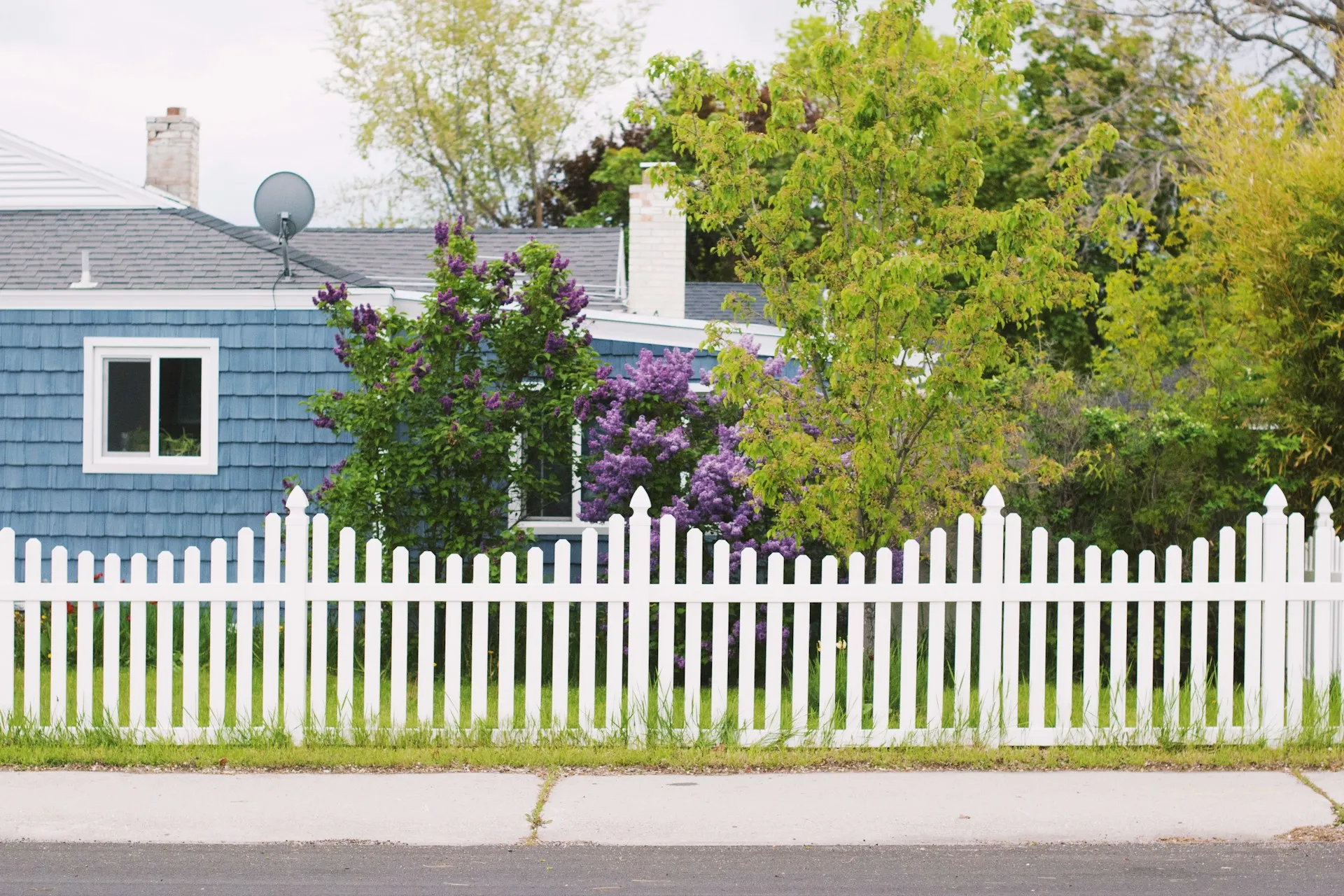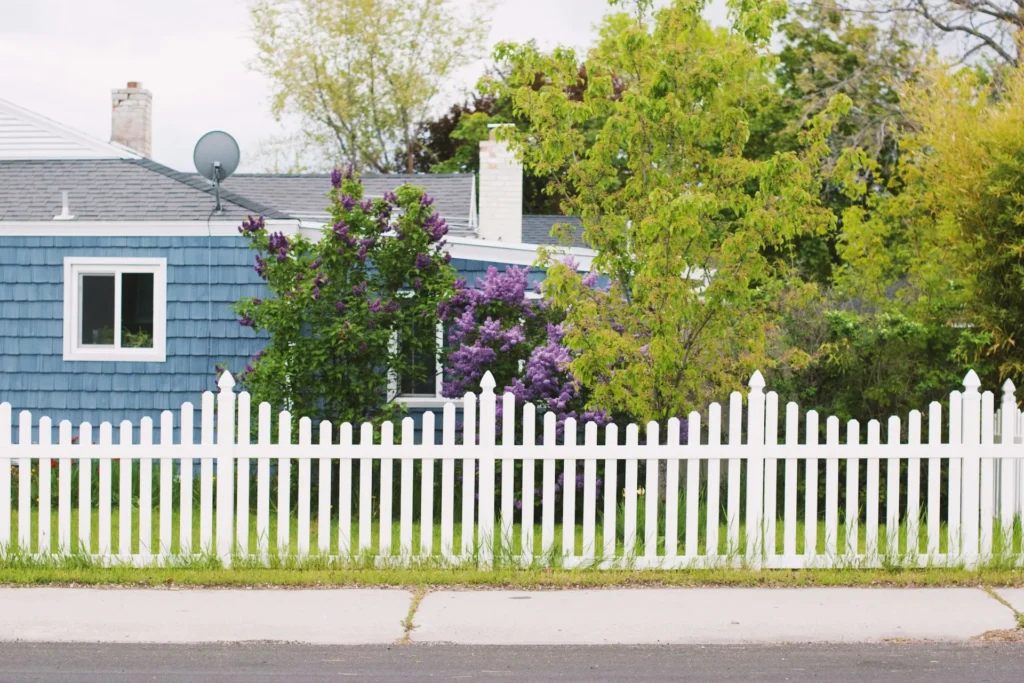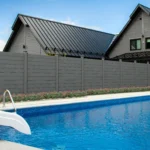When planning a new fence for your home, budget is often one of the first considerations. While wood fencing has been the traditional go-to for decades, composite fencing is quickly gaining popularity for its durability and modern appeal. But one question continues to surface: Is composite fencing cheaper than wood?
The short answer: Wood is usually cheaper upfront, but composite can be more cost-effective in the long run. In this article, we’ll compare composite and wood fencing across several categories—cost, maintenance, lifespan, and more—so you can decide which material makes the most sense for your home and budget.
Wood and Composite Fence Comparison
Upfront Cost Comparison
Let’s start with the initial investment. Wood fencing, particularly pressure-treated pine or cedar, tends to have a lower upfront price point than composite.
Average material costs:Wood fencing: $15–$35 per linear foot; Composite fencing: $25–$45 per linear foot
Installation costs: Wood: $10–$20 per linear foot; Composite: $15–$25 per linear foot
So, for a 100-foot fence:
- Wood fence total: $2,500–$5,500 installed
- Composite fence total: $4,000–$7,000 installed
Conclusion: Wood is significantly cheaper upfront, making it the better option for homeowners on a tight budget or looking for a quick fix.

Long-Term Maintenance Costs
Initial price tags don’t tell the whole story. Maintenance costs over time can have a big impact on the total expense of your fence.
Wood fencing maintenance includes: Staining or painting every 2–3 years; Regular inspections for rot, pests, and warping; Occasional repairs or board replacements
Composite fencing maintenance includes: Occasional cleaning with soap and water; No staining, painting, or sealing required; Highly resistant to rot, insects, and fading
Estimated 10-year maintenance cost:
- Wood: $500–$1,500+
- Composite: Less than $100
Conclusion: While wood fences may be cheaper at first, the ongoing maintenance can add up quickly. Composite fencing offers substantial savings over time with far less upkeep.
Lifespan and Durability
A fence is an investment, so you want it to last. Durability plays a major role in long-term value.
- Wood fencing lifespan: Typically 10–15 years with regular maintenance; Susceptible to rot, termites, and weather damage
- Composite fencing lifespan: Typically 25–30 years or more; Engineered to resist moisture, insects, fading, and cracking
Conclusion: Composite fencing outlasts wood significantly, making it a better option for long-term property value and less frequent replacement.
Aesthetic and Style Considerations
Style is another factor in the decision-making process. Both wood and composite offer different aesthetic advantages.
- Wood fencing: Natural, timeless look; Can be stained or painted in any color; Shows age over time with fading and weathering
- Composite fencing: Comes in a variety of colors and finishes; Mimics the look of wood without the aging; Holds its appearance longer with less effort
Conclusion: Wood offers more customization, but composite holds its look over time with little maintenance. Choosing between the two comes down to personal style and how much upkeep you’re willing to take on.
Environmental Impact
If sustainability is part of your decision, both materials have pros and cons.
- Wood fencing: Renewable material, but often treated with chemicals; Requires regular painting or sealing with chemical products
- Composite fencing: Made from recycled wood fibers and plastic; Long-lasting and low-maintenance, which reduces waste over time
Conclusion: Composite fencing tends to be the more eco-friendly choice, especially if made from high-recycled content and responsibly sourced materials.
Wood vs Composite Fence: Which Is Really Cheaper?
Let’s compare side by side:
| Feature | Wood Fencing | Composite Fencing |
| Upfront Cost | Lower | Higher |
| Maintenance | High (ongoing) | Low (minimal) |
| Lifespan | 10–15 years | 25–30+ years |
| Durability | Prone to rot/pests | Moisture- and insect-resistant |
| Eco-Friendliness | Medium | High |
| Total Long-Term Value | Lower | Higher |
Scenario Example
If you plan to stay in your home for 5 years, wood fence might save you money short-term. If you’re staying 10–20 years, composite fence often ends up being the more economical and hassle-free option.
Conclusion
So, is composite fencing cheaper than wood? In terms of initial cost, wood wins. But when you factor in maintenance, repairs, and longevity, composite fencing often proves to be the more cost-effective investment.
If you’re looking for a low-maintenance, long-lasting, and eco-friendly solution—and you’re planning to stay in your home for years to come—composite fencing may be worth the higher upfront price.
Find more helpful fencing guides and comparisons on ecobuildhome.com. Whether you’re building from scratch or upgrading an old fence, we’ve got tips to help you build smarter and greener.


